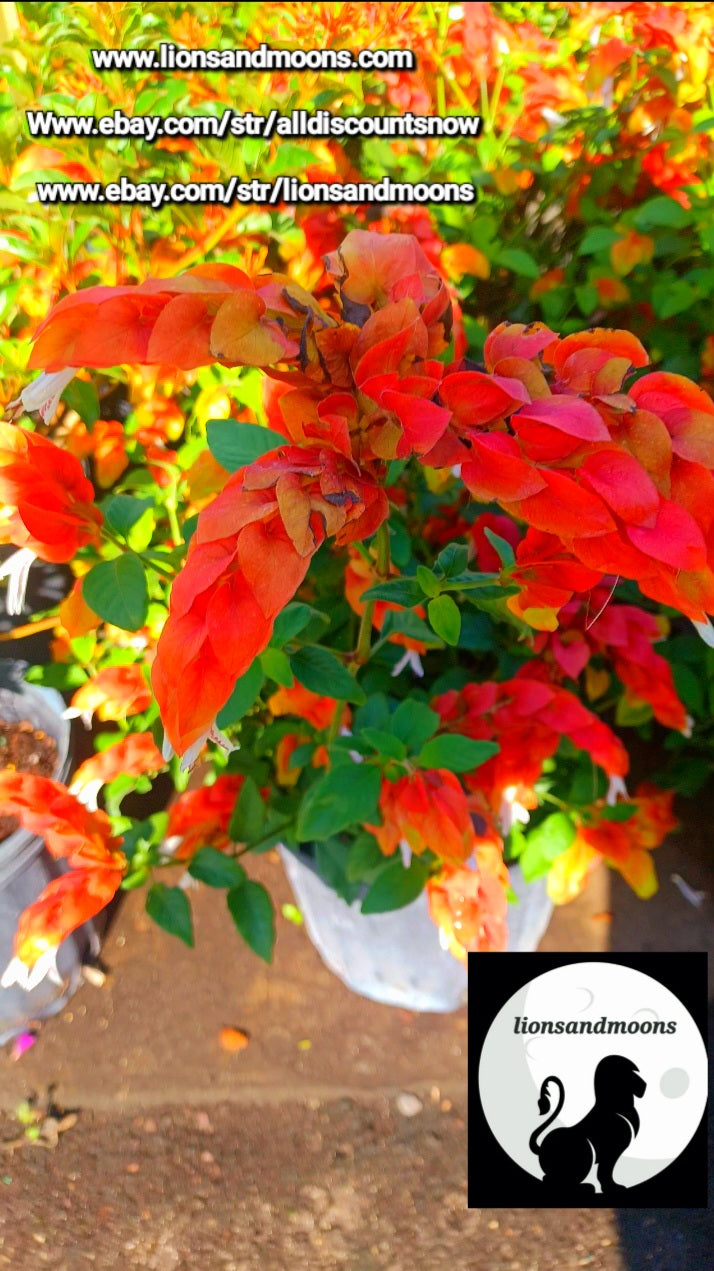lionsandmoons
The "Red Shrimp Plant" (Justicia brandegeana) live plant 3 gal pot 3-4 ft sacred lionsandmoons
The "Red Shrimp Plant" (Justicia brandegeana) live plant 3 gal pot 3-4 ft sacred lionsandmoons
Couldn't load pickup availability
The "Red Shrimp Plant" (Justicia brandegeana) live plant 3 gal pot 3-4 ft sacred
The "Red Shrimp Plant" (Justicia brandegeana)
3 Gal 3-4 ft
Sh!ps Free Same plant in the pictures plants do have usps insurance if plants are damaged or lost by usps I have insurance on the package :)
The "Red Shrimp Plant" (Justicia brandegeana) is a tropical perennial shrub known for its distinctive, red-colored bracts that resemble the shape of shrimp. These bracts encase clusters of small, tubular white flowers, attracting pollinators like hummingbirds. The plant thrives in warm climates, particularly zones 8-11, and prefers well-drained soil, partial to full sun, and regular watering.
Here's a more detailed look at the Red Shrimp Plant:
Appearance:
Bracts: The main feature is the showy bracts, which are red to pinkish-red and form a cluster resembling a shrimp's tail.
Flowers: Small, white, tubular flowers emerge from between the bracts.
Foliage: The plant has dark green, oval-shaped leaves.
Growth and Care:
Light: Thrives in full sun to partial shade, but prefers morning sun to prevent color fading.
Watering: Needs regular watering, especially during summer months.
Soil: Well-drained soil is essential.
Pruning: Pruning can encourage bushier growth and more blooms.
Overwintering: In cooler climates, Red Shrimp Plants can be grown in containers and brought indoors during winter, or they can be treated as annuals.
Varieties:
Fruit Cocktail Shrimp Plant: A cultivar with more compact, well-branched growth and golden lime-colored bracts.
Variegated Shrimp Plant: Features variegated foliage with creamy white and green markings.
Uses:
Gardens: Used as borders, beds, or containers.
Pollinator Attraction: Attracts hummingbirds and other pollinators.
Houseplants: Can be grown indoors in containers, especially in cooler climates.
Share







